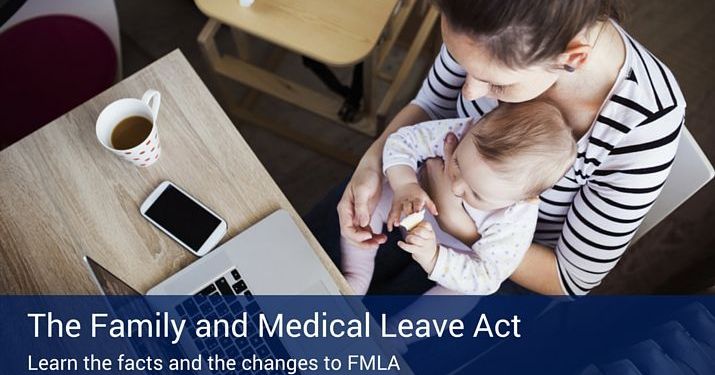5 Interesting Facts About the FMLA
Last Updated January 26, 2022

The Family and Medical Leave Act (FMLA) was signed into law by President Clinton in 1993, after being introduced in Congress every year from 1984 to 1992. Since it became law, the FMLA has been used more than 100 million times by people all across the country to temporarily leave their jobs for the birth of a child, to care for a spouse, child or parent in need, or for their own serious health conditions.
The FMLA allows eligible employees of covered employers to take unpaid leave of up to 12 workweeks in a 12-month period for specified family and medical situations, while protecting their jobs and keeping their health insurance in place.
5 Things You Should Know About FMLA
1. FMLA Regulations Aren’t Universal- Not all employers and employees are affected by the FMLA. Here’s how the law defines covered employers:
- A private-sector company that had 50 or more employees in 20 or more workweeks this calendar year or the previous calendar year
- Public agencies, such as local, state, or federal government agencies, with one or more employees
- Public or private elementary or secondary schools with one or more employees
The law defines eligible employee as:
- One who has worked for a covered employer for at least 12 months (which do not have to be continuous)
- One who has worked at least 1,250 hours during the 12 months preceding the leave (approximately 156 eight-hour days)
- One who works at a location where the employer has at least 50 employees within a 75-mile radius
2. Six Qualifying FMLA Events- Not every family medical situation qualifies under the FMLA. Here are six common events that are covered:
- The birth of a child
- Time to bond with a newborn
- When a child is placed with the employee for foster care or adoption
- When the employee, or his or her spouse, son, daughter or parent, has a serious health condition
- Demands that arise when a son, daughter, spouse or parent is a military member on active duty
- Caring for a servicemember with a serious injury or illness, when the servicemember is the spouse, son, daughter, parent or next of kin
3. Defining a Serious Health Condition- Under the FMLA, a serious health condition is an injury, illness or impairment, either physical or mental that involves:
- Any period of incapacity or treatment resulting from a stay in a hospital or medical care facility
- A period of incapacity that requires more than three days off from work and involves continuing treatment by a healthcare provider
- Any period of incapacity stemming from pregnancy or for prenatal care
- Any period of incapacity from a chronic health condition, terminal illness, or long-term or permanent condition
- Absences due to multiple treatments for conditions or illnesses that would result in more than three days of incapacity if left untreated
4. Periodic Visits are Sometimes Required- Under the FMLA, employers may require certification from a healthcare provider, as well as periodic recertification of serious health conditions:
- Periodic visits need to occur at least twice per year
- Employees must provide the medical certification, and if the condition is chronic, they must specify whether there will be periodic visits, during which the provider will determine the severity of the condition
5. FMLA Military Regulations- The FMLA allows up to 26 workweeks of leave in a single 12-month period to care for a servicemember with a serious injury or illness, when the service member is the spouse, son, daughter, parent or next of kin of the employee. In addition, it allows eligible employees to take leave for certain post-deployment exigencies for a period of 90 days following the termination of active duty status.
Recent Changes to FMLA
Along with the five important FMLA facts above, you should be aware that updates to the law include a revision of the definition of spouse. As of March 2015, eligible employees in same-sex marriages are covered under the same provisions of FMLA as opposite-sex couples. Regardless of whether the state in which they live recognizes their legal marriage, same-sex couples have the right to take FMLA leave to care for a spouse or family member.
Keep Up With FMLA Regulations
The FMLA contains many provisions, definitions and details that covered employers must be familiar with in order to avoid compliance issues. It can be a complex law, so if you’re wondering about specific circumstances or whether an employee is covered under FMLA, check out the U.S. Department of Labor’s website.
